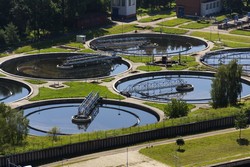Wastewater treatment strategies reduce greenhouse gas emissions
The EU-funded GREENCOST project used mathematical models to create a guide for WWTP management. This was based on the case study of an innovative process known as ‘Integrated system of methanogenic anaerobic reactor and membrane bioreactor for chemical oxygen demand and nitrogen removal in wastewater’. A life-cycle assessment of the prototype process was conducted, and potential for global warming and eutrophication were identified as the main environmental impacts of WWTPs. Strategies were then developed for operating the WWTP depending on the operators’ objective, e.g. maximising the removal of nutrients, minimising the carbon footprint or minimising carbon footprint used to remove nutrients. Computer simulations were used to determine which operational strategies would lead to optimal performance according to each of the objectives. These operational changes involved operational variables such as hydraulic residence time, anoxic volume of the plant, solids retention time, dissolved oxygen level and recirculation rate. The model also enabled researchers to identify the microbial groups thriving in each of the operational strategies, thereby providing major insight regarding the process to managing operators. Results showed that mathematical modelling was a useful tool for reducing the environmental impact of WWTPs. It resulted in being especially useful for reducing the global warming potential of complex and novel WWTPs, while allowing a plant to continue its main function of producing clean water from wastewater. The data obtained from the mathematical analysis were also used to design a fully operational control system that will eventually be installed in the plant prototypes. A major benefit of this controller is that it can regulate the plant carbon footprint as well as the effluent quality. GREENCOST also developed data analysis tools for evaluating and benchmarking energy consumption in real-world WWTPs. The main methods for benchmarking were divided into three classes – ratio indicators, statistical techniques and programming techniques – and the advantages and disadvantages were identified for each one. The project’s findings were instrumental in developing methodologies for measuring and reducing energy expenditure in real WWTPs.







